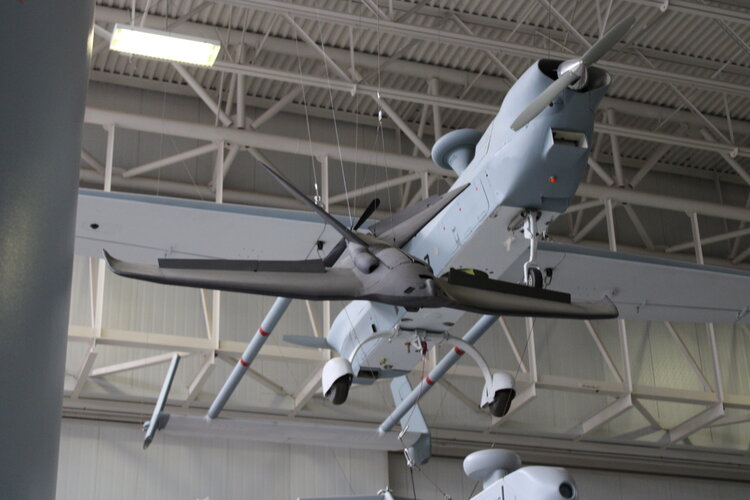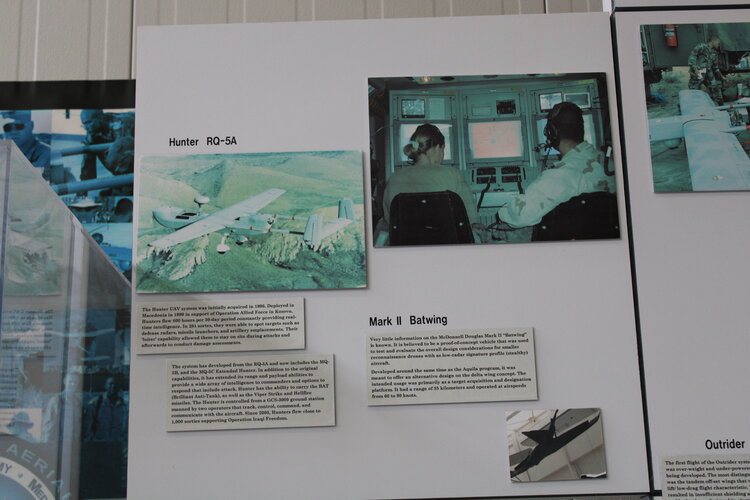I recently visited the United States Army Aviation Museum at Fort Rucker, AL, and I came across the McDonnell Douglas Mark II Batwing. I haven't been able to find any information on this aircraft other than what was on the Museum's sign, and the only evidence of its existence on the internet is this blog. Does anyone have any information on the Mark II Batwing?
You are using an out of date browser. It may not display this or other websites correctly.
You should upgrade or use an alternative browser.
You should upgrade or use an alternative browser.
McDonnell Douglas Mark II Batwing
- Thread starter ZLEA
- Start date
- Joined
- 6 August 2007
- Messages
- 3,888
- Reaction score
- 5,918
I recently visited the United States Army Aviation Museum at Fort Rucker, AL, and I came across the McDonnell Douglas Mark II Batwing. I haven't been able to find any information on this aircraft other than what was on the Museum's sign, and the only evidence of its existence on the internet is this blog. Does anyone have any information on the Mark II Batwing?
It is mounted upside down.
Last edited:
- Joined
- 19 December 2011
- Messages
- 224
- Reaction score
- 439
Beat me to it. That's AQUILINE for sure. Nice to see one on display.
piginapoke
I really should change my personal text
- Joined
- 11 March 2013
- Messages
- 91
- Reaction score
- 114
Thank you for asking the question. I always wondered what it was and never got anywhere finding information about it, and now i can see why.I recently visited the United States Army Aviation Museum at Fort Rucker, AL, and I came across the McDonnell Douglas Mark II Batwing. I haven't been able to find any information on this aircraft other than what was on the Museum's sign, and the only evidence of its existence on the internet is this blog. Does anyone have any information on the Mark II Batwing?
- Joined
- 19 February 2007
- Messages
- 1,438
- Reaction score
- 2,676
I think a few elements of information have been comingled and conflated.

- Aquiline is ... Aquiline (and/or Batwing).
- Mark 2 (or Mk II) was an internal McAstro (McDonnell Douglas Astronautics, Huntington Beach, CA) project (as I assume Aquiline was originated). It would appear that this was where the residual Aquiline project assets (mentioned in the CIA letter above) were destined.
- The Mark 2 was approximately the same size and configuration as the Aquiline, however, engineering and construction was simplified considerably, reducing cost.
- The Army performed signature testing on the Mark 2, the Philco-Ford Prairie (or a member of this family), and an Applied Physics Lab delta wing vehicle as mini-RPV.
- The Mark 2 program was ended by Fall of 1973 or 74 when a McAstro VP reportedly declined further internal funding.
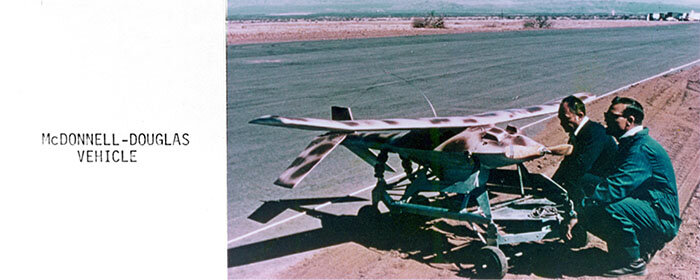
Last edited:
- Joined
- 6 August 2007
- Messages
- 3,888
- Reaction score
- 5,918
I think a few elements of information have been comingled and conflated.
- Aquiline is ... Aquiline (and/or Batwing).
- Mark 2 (or Mk II) was an internal McAstro (McDonnell Douglas Astronautics, Huntington Beach, CA) project (as I assume Aquiline was originated). It would appear that this was where the residual Aquiline project assets (mentioned in the CIA letter above) were destined.
- The Mark 2 was approximately the same size and configuration as the Aquiline, however, engineering and construction was simplified considerably, reducing cost.
- The Army performed signature testing on the Mark 2, the Philco-Ford Prairie (or a member of this family), and an Applied Physics Lab delta wing vehicle as mini-RPV.
- The Mark 2 program was ended by Fall of 1973 or 74 when a McAstro VP reportedly declined further internal funding.
View attachment 684636
There was an AQUILINE Mark I, and a Mark II. Mark II is the bird-like final version. The Mark I was an earlier developmental prototype:
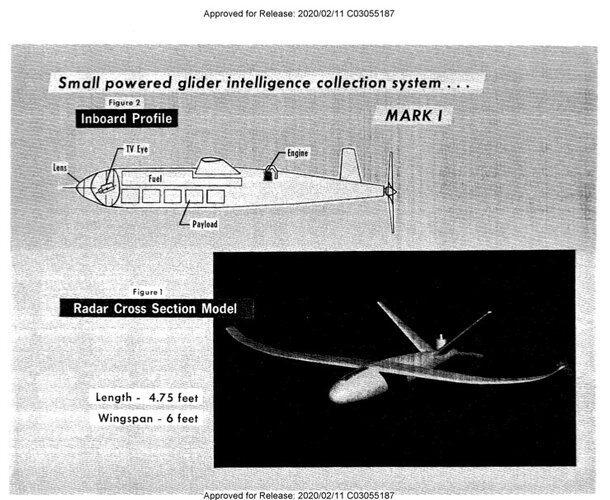
The RPV you have pictured was a later RPV of low radar cross section built for a mini-RPV test at Eglin. They tried to shoot it down with a ZSU. That test was one of the things that convinced DARPA to move ahead with low RCS aircraft.
From: http://aviadejavu.ru/Site/Crafts/Craft34049.htm , original source may be Jane's All The World's Aircraft 1976
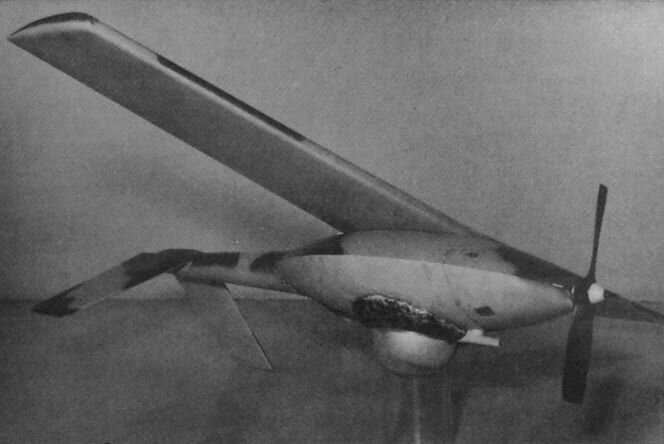
"Living in the Black World", section 1, pg 20:
Ken felt we could beat those. He wanted some idea of what impact that might have on the threats. So I got the job of putting together a program. We called it the mini-RPV survivability test program, MRSTP. That was a small [aircraft] McDonnell Douglas built out at Long Beach. And the program was called Aquila where they built an RPV that went long distances, but had relatively low cross section. The bird we built looked nothing like that, but they already had a proven expertise along
Section 1, page 20
with, at that time, TRW, [which] was running one. So we went to both McDonnell Douglas and TRW and said, "Build us a low observable or a low RCS RPV." TRW failed to step up to it and said, "There's no way we can build one." McDonnell Douglas said, "We'll build you one. We'll fly it." We took it to Florida, to Eglin at a place called Cape San Bias. Cape San Bias is a spit down there were they've got an FPS-16 tracking radar where they tracked all of the drone tests out over the Gulf that they used to do. Eglin flew the drones out of Tyndall and they'd shoot at them with Bomarc and other kinds of missiles. If the drone didn't get killed and was able to come back, they'd bring it back and land it. But they had a good tracking system out there and it's very isolated. We flew against a variety of radars, AAA gun systems and missile systems.
We did really well. I mean really well to the extent that nothing had any success with it and we weren't real low. So that was the one test that Ken needed to go further with the next step; to say, if we could get this down to here, here's the impact.
"Living in the Black World", section 1, pg 23:
Here comes the linkage of the RPV program back into this thing. It has very little to do with the stealth technology, but has something to do with the way the system was working at the time. When I was at Eglin, just before we ran the real test, we fired at this little RPV against an AAA gun system. Let me show you what it looked like. [shows picture] If you've ever seen that picture, that came from DARPA. This is an old briefing that I used to give to Navy and Air Force people when I was at Wright Field. That's what the RPV looked like. To show you that it isn't very big, the guy holding it up is me. It weighed about a hundred pounds, had a seven-foot wing span, and we took it out and we actually fired at it. Those are real bullets. It looks like they're all around it.
The AQUILINE aircraft, at final program termination, were given to the Army to aid in development of AQUILA.
From CIA memo "Disposal of AQUILINE assets"
2. The U. S. Army Electronics Command now has a valid requirement for this remaining hardware and contractor docu- mentation for application in its‘Remotely Piloted Vehicles
(RPV) programs. It is recommended that the AQUILINE assets be transferred to the U. S. Army on a n0n—reimbursab1e basis with the Army paying for shipping costs only.
3. Request your concurrence in transferring AQUILINE materials detailed in the attachment to this memorandum to
the U. S. Army Electronics Command.
Last edited:
- Joined
- 19 February 2007
- Messages
- 1,438
- Reaction score
- 2,676
@Q, Thanks for the additional data. My tidbits were based on a conversation with a program participant 45 years after the fact. YMMV (your memory may vary!). *shrug*
Can't attest for Jane's AWA '76, but there is an entry on p547 of the '75 Jane's; with the photo you posted. The actual Jane's photo is of not much better quality than what you posted.
Can't attest for Jane's AWA '76, but there is an entry on p547 of the '75 Jane's; with the photo you posted. The actual Jane's photo is of not much better quality than what you posted.
- Joined
- 6 August 2007
- Messages
- 3,888
- Reaction score
- 5,918
Aviation Week 11 26 1973 had a better photo of a later iteration:@Q, Thanks for the additional data. My tidbits were based on a conversation with a program participant 45 years after the fact. YMMV (your memory may vary!). *shrug*
Can't attest for Jane's AWA '76, but there is an entry on p547 of the '75 Jane's; with the photo you posted. The actual Jane's photo is of not much better quality than what you posted.
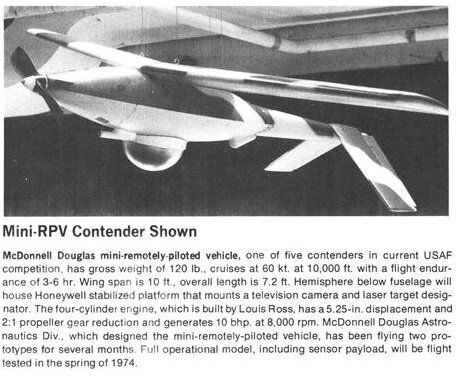
Mini-RPV Contender Shown
McDonnell Douglas mini-remotely-piloted vehicle, one of five contenders in current USAF competition, has gross weight of 120 lb., cruises at 60 kt. at 10,000 ft. with a flight endurance of 3-6 hr. Wing span is 10 ft., overall length is 7,2 ft. Hemisphere below fuselage will house Honeywell stabilized platform that mounts a television camera and laser target designator. The four-cylinder engine, which is built by Louis Ross, has a 5.25-in. displacement and 2:1 propeller gear reduction and generates 10 bhp. at 8,000 rpm. McDonnell Douglas Astronautics Div.. which designed the mini-remotely-piloted vehicle, has been flying two prototypes for several months. Full operational model, including sensor payload, will be flight tested in the spring of 1974.
Scott Kenny
ACCESS: USAP
- Joined
- 15 May 2023
- Messages
- 11,553
- Reaction score
- 14,151
That is a very attractive craft!
Similar threads
-
-
McDonnell Douglas F101B Voodoo - carrying MIM-23 Hawk Missile
- Started by Jonathan338
- Replies: 11
-
Douglas VTOL/VSTOL/STOL Projects
- Started by Mark Nankivil
- Replies: 15
-
Convair Super Hustler, Fish and Kingfish
- Started by styx
- Replies: 238
-

